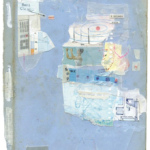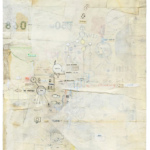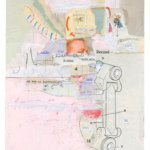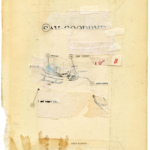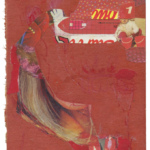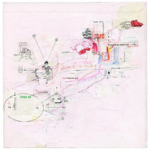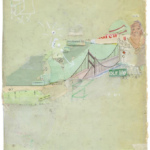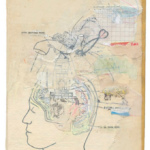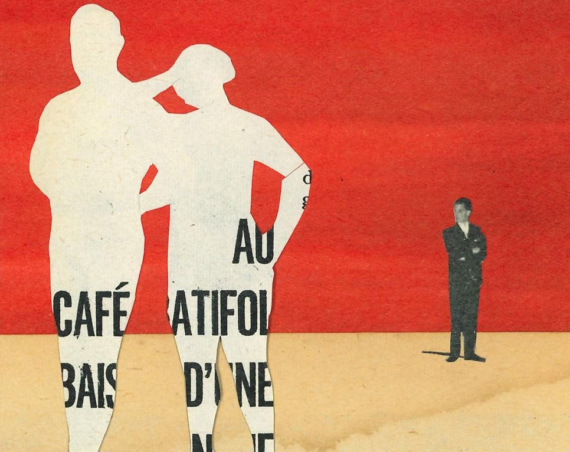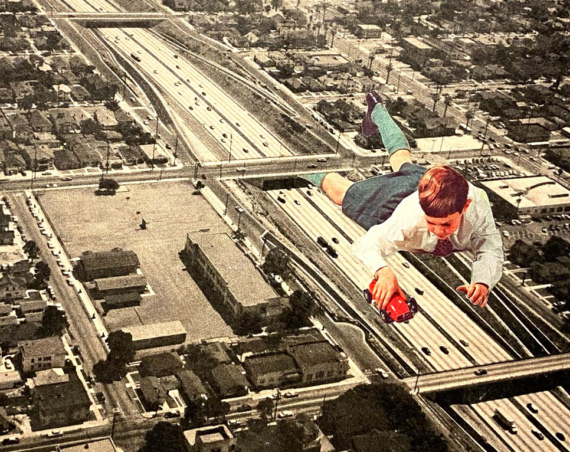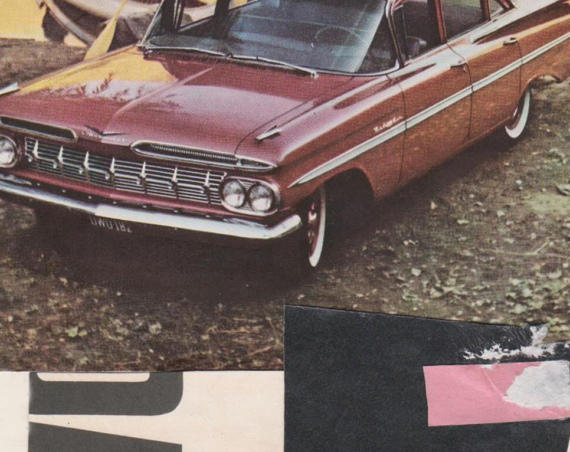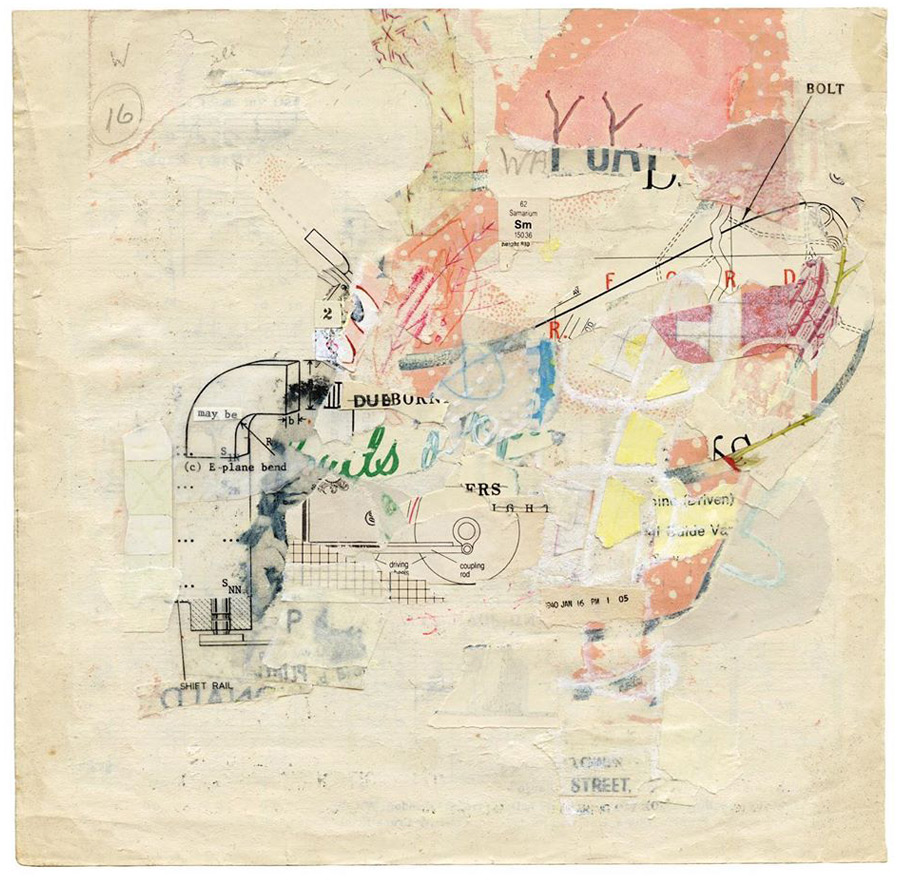
First few basic questions, who are you, what are you doing, where are you coming from?
I’m Oliver Lunn, I live in London, and right now I mostly make mixed media collages.
Your works have very interesting, prevailing rough and certain raw atmosphere because of all the textures and structures – How would you describe your style? And how quickly you found your ”style”?
One thing I’ve become more aware of, style-wise, is that most of my pieces mix handmade marks with printed graphics and there’s sort of tension there. But yeah, you could call it raw and chaotic. I like thinking of it in terms of a defaced school book, like when a kid gets bored in science class and doodles over their textbook. That daydreaming creativity can be interesting. I think it’s a style that’s quite loose, maybe primitive, in the sense that the marks are crude and clearly handmade as opposed to computer made. No idea where or when I found the style, but I guess the roots are in the artists I loved as a teen – Rauschenberg, Twombly, Basquiat.
What are your tools? Scissors or a blade? Glue or tapes?
I use my hands to tear mostly. I spend probably too much time thinking about edges – torn edges, cut edges, round edges, overlapped edges. As for glue, I’ll use matte medium just as much as good ol’ Pritt Stick. The tapes are great. I’ve recently been thinking of them as an underrated tool for mark-making. Cory Peeke is someone who I think uses them in a really interesting way.
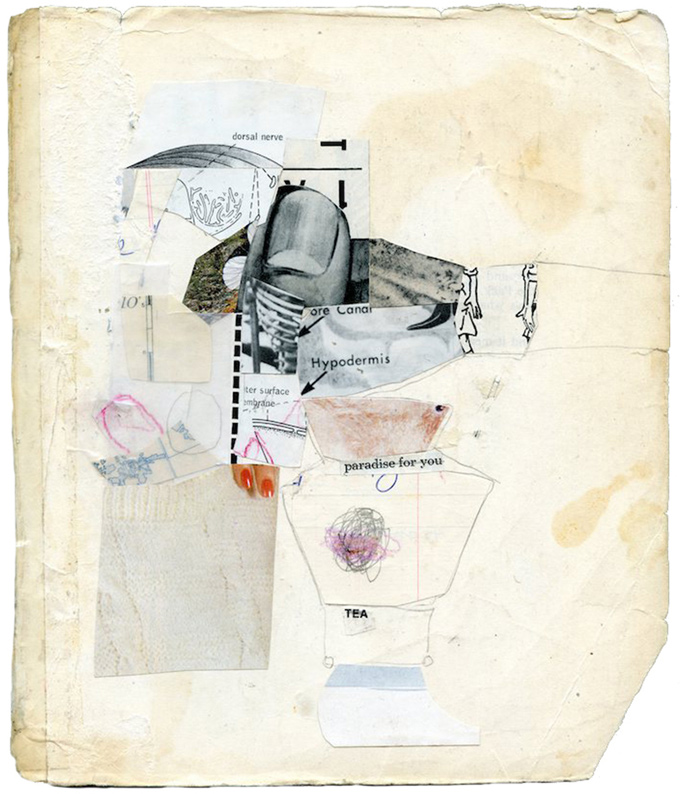
How you’d describe your fascination to paper as a working material? What do you like most about it?
I get excited by subtle color variations. I definitely like paper that looks as though it’s lived in the world for a bit and hasn’t been delivered straight to your door, factory fresh. That’s where the historical aspect of the paper is interesting – the idea that old paper carries with it elements of decay, time, people’s stories, their sweat, their trace. It’s all great stuff.
Do you have favorite source materials, or do you like the challenge of working with something new?
It’s sort of a cliche in collage art to use vintage materials, but I do it too, although not exclusively. I’m not interested in the nostalgic content – I try to avoid anything that feels retro, like old TV sets and hoovers. It’s more that those materials have the best colors, specifically faded colors, colors that fit a certain tone and mood I want to capture. Plus all the things about the paper I mentioned before. But the stuff I work with spans from the 1930s-1990s. I’m not tied to any particular era.
When do you start to work a new piece, how do you approach your subject?
So I rarely ever start with a blank piece of paper. I normally start with a surface I like – maybe it’s a pale blue book cover, a found image, or an old page with an illustration I think would be fun to work over. I find a few clashing colors or marks that I can combine, and run with it from there.
Can you tell me about your creative process?
I kneel on a cushion on a bench and hunch over a desk, which is definitely terrible for my back. Music plays a big part. For a while, I tried to listen to podcasts but all my pieces fell apart and it felt like mindless factory-style creation. I react better to music and work off that energy.
I always pour out a box of offcuts and isolate certain bits that feel right for whatever I’m working over. Then I stick things down, peel them off, erase bits with markers, deface bits. Adding and subtracting, not being too precious about it.
My work’s not crazy colorful but I think a lot about color, especially at the end. I like little splashes that pop out and compliment the overall tone. I think of it like movies, where you might have a dominant green and then a tiny splash of red light to compliment it. It feels more mood-driven I suppose.
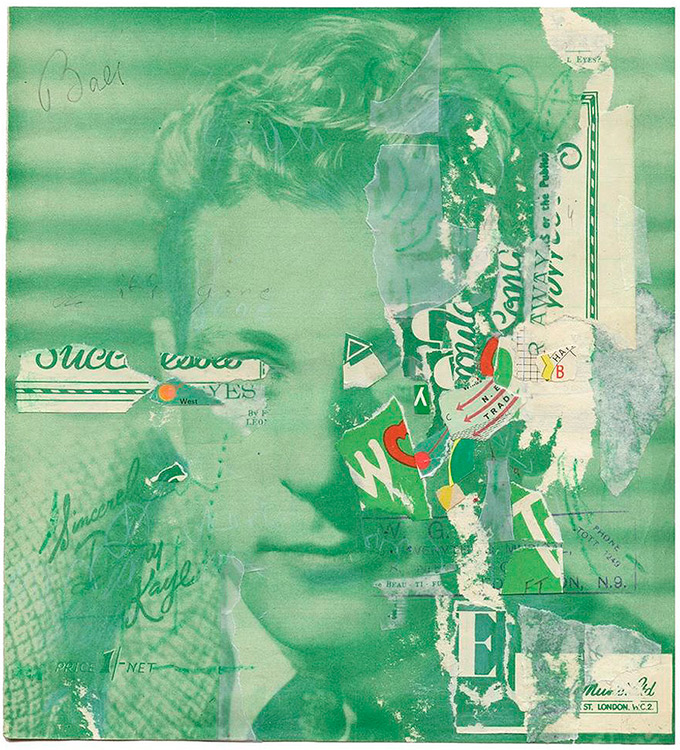
How easy or hard is it to finish your works? Do you ever get burnt out on a piece, and what do you do to keep working and being productive?
I’m constantly getting burned out on pieces! Right now I have about six pieces on the go, none of them working for me. I’ll either figure out why some aren’t working or I’ll let them go, tear them up to reuse fragments that fit better elsewhere. Overall I’m happy with about 10% of what I produce. And I try not to spend longer than a couple of weeks on one piece, because by then it’s probably a lost cause anyway.
I also try not to stress out about my productivity levels. It can definitely be more helpful to step back and have a break sometimes. That’s usually when you spot the thing that’s not working. Then you get that spark to dive back in.
How do you see that being an artist reflects you as a person?
Haha, it’s hard to answer that one without sounding too up my own arse (as we say in the UK). I think it reflects me as a person in so far as creativity plays a big role in my life, and my eye is drawn to certain things for reasons I’m not fully aware of. It sounds a bit self-important though. I try not to think about my identity as an artist too much. I used to wonder, am I a collagist or am I a painter or am I both? None of it matters. What matters is that you’re engaged with what you’re doing and your work reflects a part of you.
If you should describe your art with one word, what would it be?
Nebulous.
Oliver Lunn around the internet
Homepage: www.oliverlunn.com
Instagram: @moonloops101

